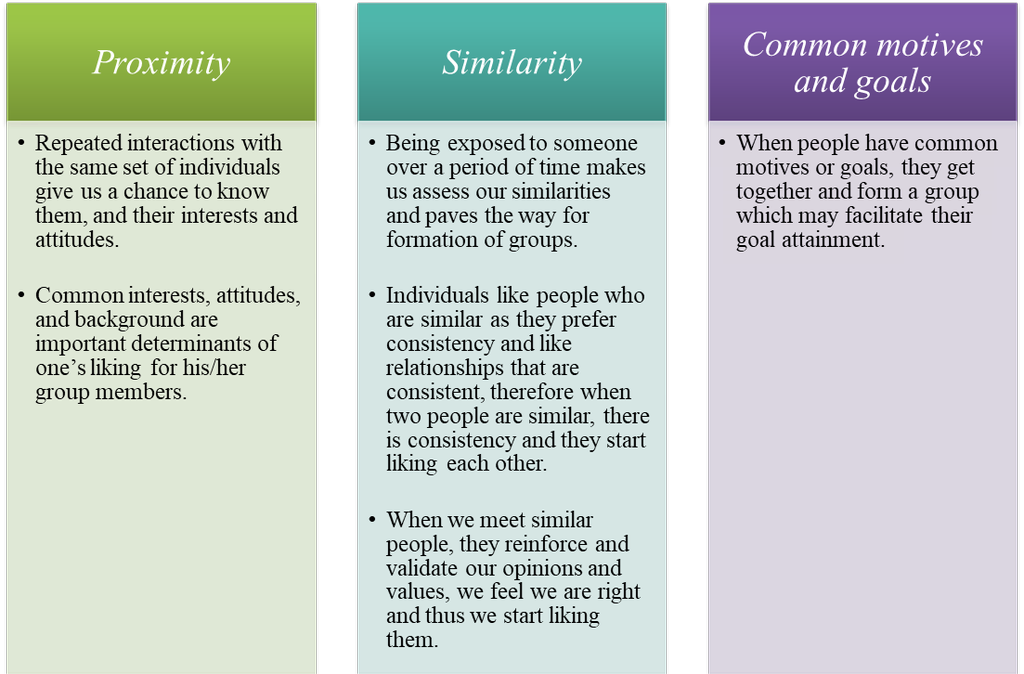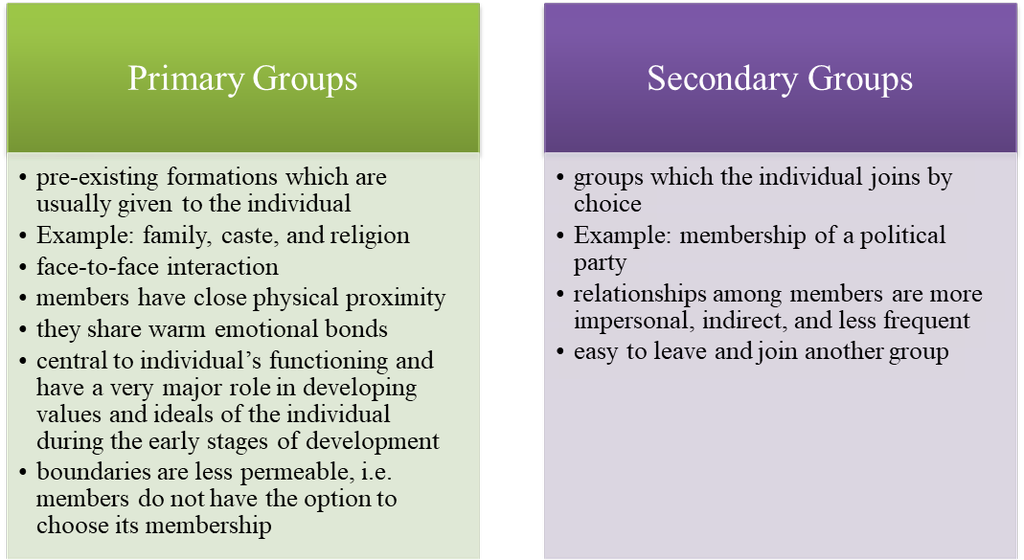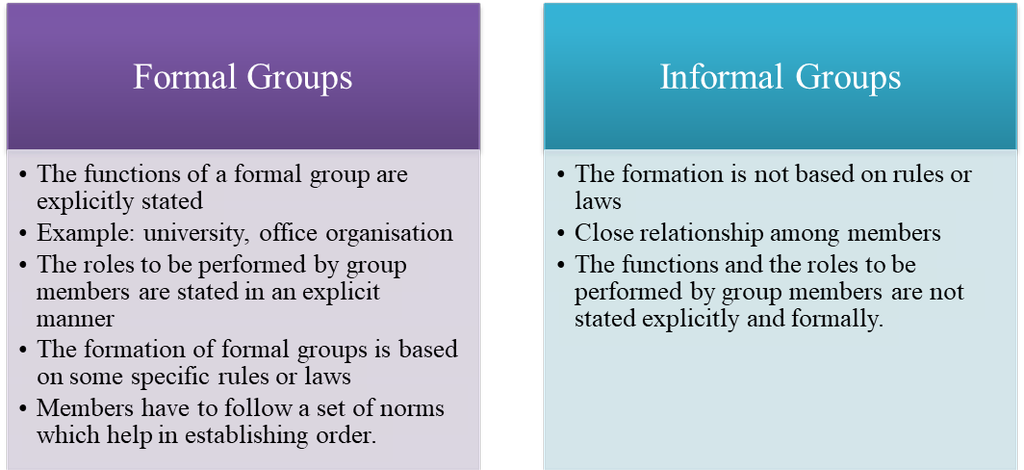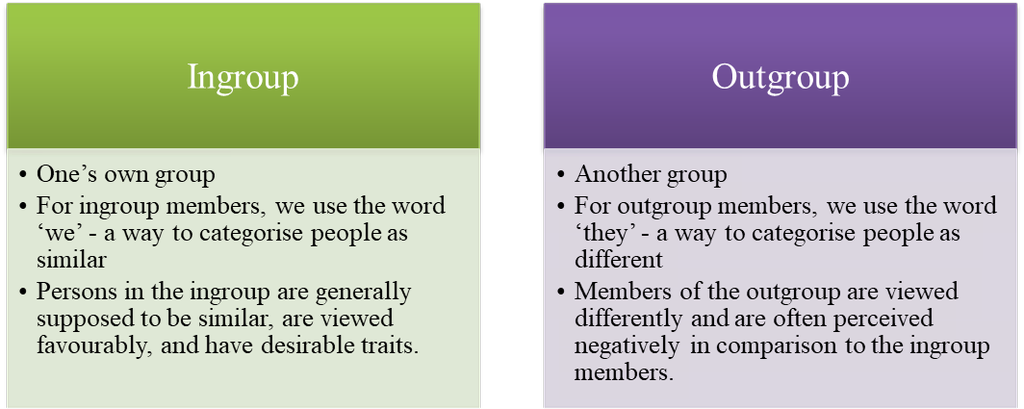- Books Name
- Psychology Book Class-12
- Publication
- PathSet Publications
- Course
- CBSE Class 12
- Subject
- Psychology
Groups
Nature and Formation of Groups
- A group may be defined as an organised system of two or more individuals who:
- are interacting and interdependent
- have common motives
- have a set of role relationships among its members
- have norms that regulate the behaviour of its members
- Characteristics of Groups:
- A social unit consisting of two or more individuals who perceive themselves as belonging to the group. This characteristic of the group helps in:
- distinguishing one group from the other
- giving the group its unique identity
- A collection of individuals who have common motives and goals. Groups function either working towards a given goal, or away from certain threats facing the group.
- A collection of individuals who are interdependent, i.e. what one is doing may have consequences for others.
- Individuals who are trying to satisfy a need through their joint association also influence each other.
- A gathering of individuals who interact with one another either directly or indirectly.
- A collection of individuals whose interactions are structured by a set of roles and norms.
- This means that the group members perform the same functions every time the group meets and the group members adhere to group norms.
- Norms tell us how we ought to behave in the group and specify the behaviours expected from group members.
- Characteristics of Crowd:
- It is also a collection of people who may be present at a place/situation by chance.
- There is neither any structure nor feeling of belongingness in a crowd.
- Behaviour of people in crowds is irrational and there is no interdependence among members.
- Characteristics of Teams:
- They are special kinds of groups.
- Members of teams often have complementary skills and are committed to a common goal or purpose.
- Members are mutually accountable for their activities.
- There is a positive synergy attained through the coordinated efforts of the members.
- Differences between groups and teams:

- Characteristics of Audience:
- It is also a collection of people who have assembled for a special purpose.
- Example - to watch a cricket match or a movie.
- They are generally passive but sometimes they go into a frenzy and become mobs.
- Characteristics of Mobs:
- There is a definite sense of purpose.
- There is polarisation in attention, and actions of persons are in a common direction.
- Mob behaviour is characterised by homogeneity of thought and behaviour as well as impulsivity.
Why Do People Join Groups?

Group Formation
Basic to group formation is some contact and some form of interaction between people. This interaction is facilitated by the following conditions:

Stages of Group Formation
Tuckman suggested that groups pass through five developmental sequences:

Forming
- When group members first meet, there is a great deal of uncertainty about the group, the goal, and how it is to be achieved.
- People try to know each other and assess whether they will fit in.
- There is excitement as well as apprehensions.
Storming
- It is a stage of intragroup conflict; there is conflict among members about:
- how the target of the group is to be achieved
- who is to control the group and its resources
- who is to perform what task
- When this stage is complete, some sort of hierarchy of leadership in the group develops and a clear vision as to how to achieve the group goal.
Norming
- Group members by this time develop norms related to group behaviour. This leads to development of a positive group identity.
Performing
- The structure of the group has evolved and is accepted by group members, by now.
- The group moves towards achieving the group goal.
- For some groups, this may be the last stage of group development.
Adjourning
- In this stage, once the task is successfully completed, the group may be disbanded.
- However, it must be stated that all groups do not always proceed from one stage to the next in such a systematic manner.
- Sometimes several stages go on simultaneously, while in other instances groups may go back and forth through the various stages or they may just skip some of the stages.
Elements of Group Structure

- Roles
- They are socially defined expectations that individuals in a given situation are expected to fulfil.
- Roles refer to the typical behaviour that depicts a person in a given social context.
- An individual may have the role of a son or a daughter and with this role, there are certain role expectations, i.e. including the behaviour expected of someone in a particular role. For example, as a son or a daughter, one is expected to respect elders, listen to them, etc.
- Norms
- They are expected standards of behaviour and beliefs established, agreed upon, and enforced by group members.
- They may be considered as a group’s ‘unspoken rules’.
- Norms represent shared ways of viewing the world.
- Status
- It refers to the relative social position given to group members by others.
- This relative position or status may be either:
- ascribed (according to one’s seniority), or
- achieved (according to one’s expertise or hard work)
- By being members of the group, we enjoy the status associated with that group. All of us, therefore, strive to be members of such groups which are high in status or are viewed favourably by others.
- Even within a group, different members have different prestige and status. Although all amay be equally important for the team’s success.
- Cohesiveness
- It refers to togetherness, binding, or mutual attraction among group members.
- As the group becomes more cohesive, group members start to think, feel and act as a social unit, and less like isolated individuals.
- Members of a highly cohesive group have a greater desire to remain in the group in comparison to those who belong to low cohesive groups.
- Cohesiveness refers to the team spirit or ‘we feeling’ or a sense of belongingness to the group.
- It is difficult to leave a cohesive group or to gain membership of a group which is highly cohesive.
- Extreme cohesiveness however, may sometimes not be in a group’s interest leading to ‘groupthink’ i.e. a mode of thinking in which the desire to reach unanimous agreement over-rides the wish to adopt proper, rational, decision-making procedures (defined by Irving Janis).
Type of Groups
- Primary and Secondary Groups

- Formal and Informal Groups

- Ingroup and Outgroup (Perceptions of ingroup and outgroup affect our social lives)


 PathSet Publications
PathSet Publications
